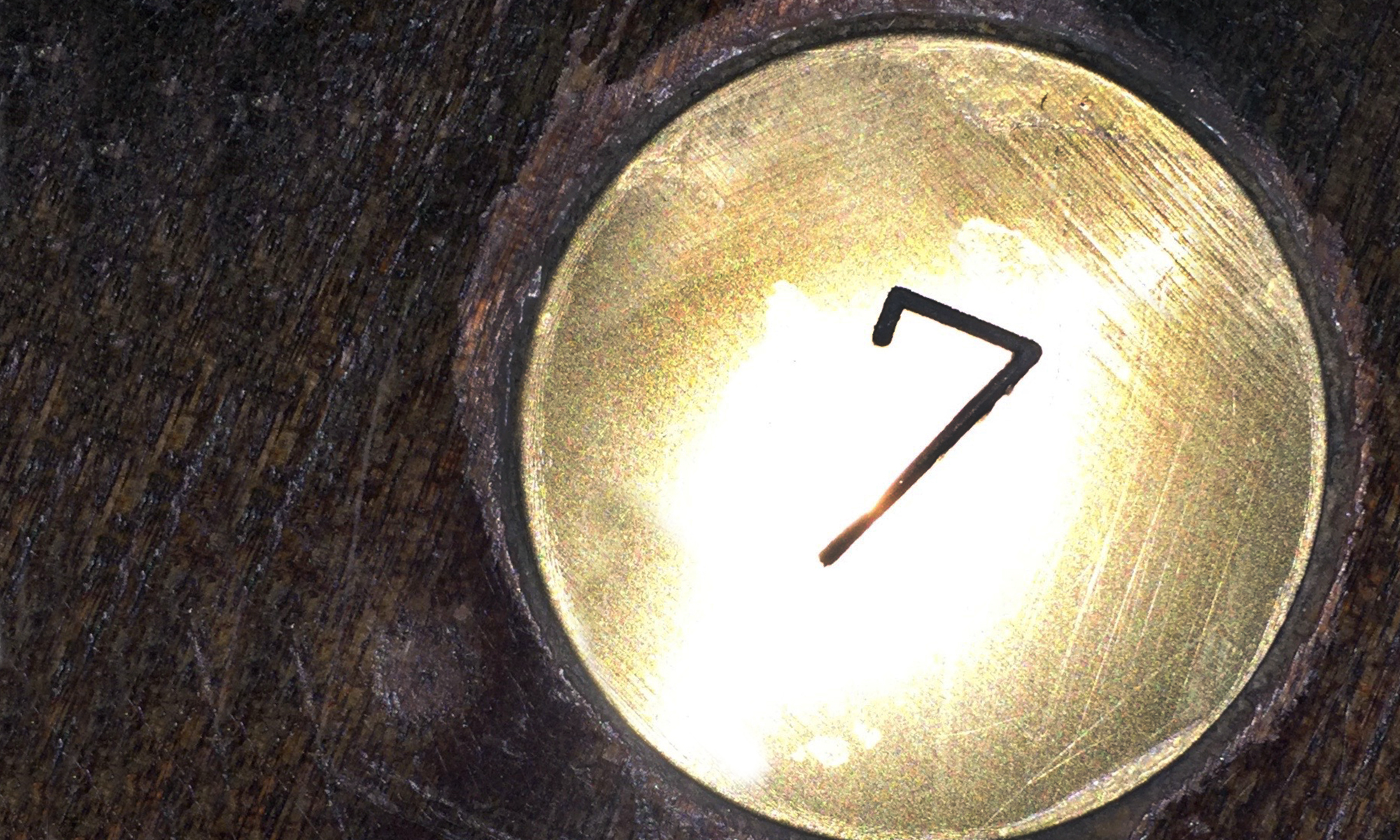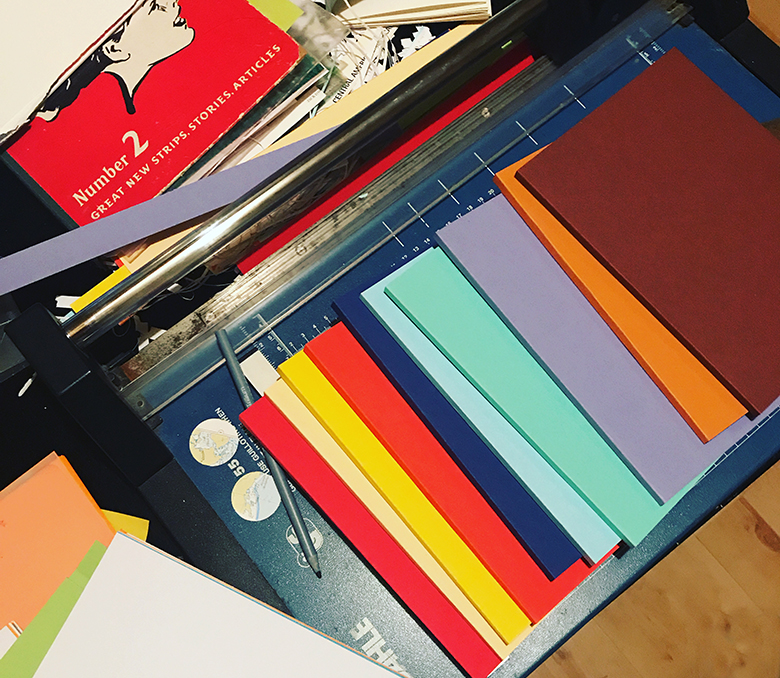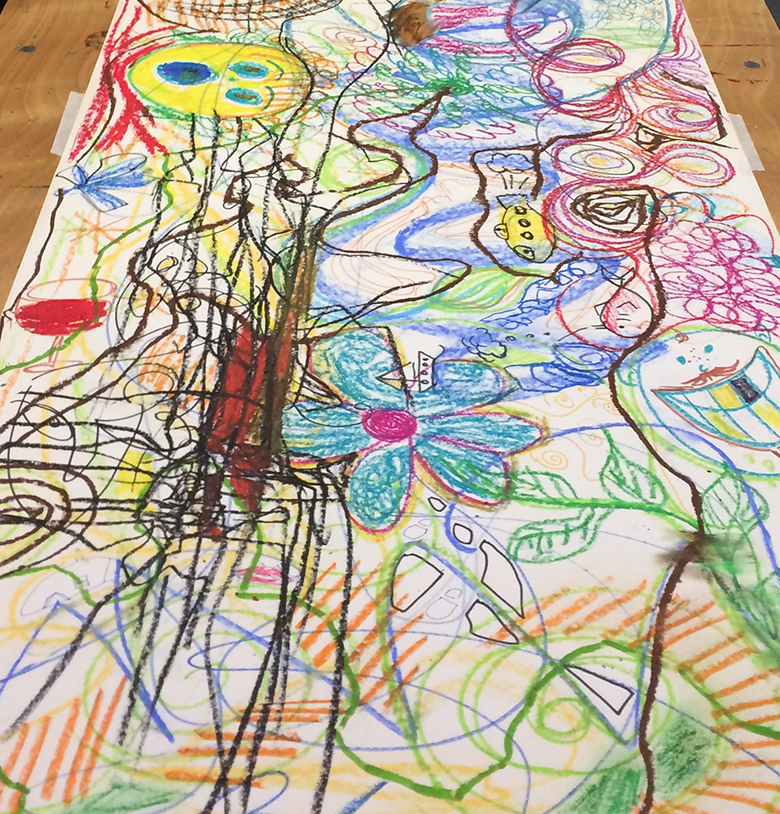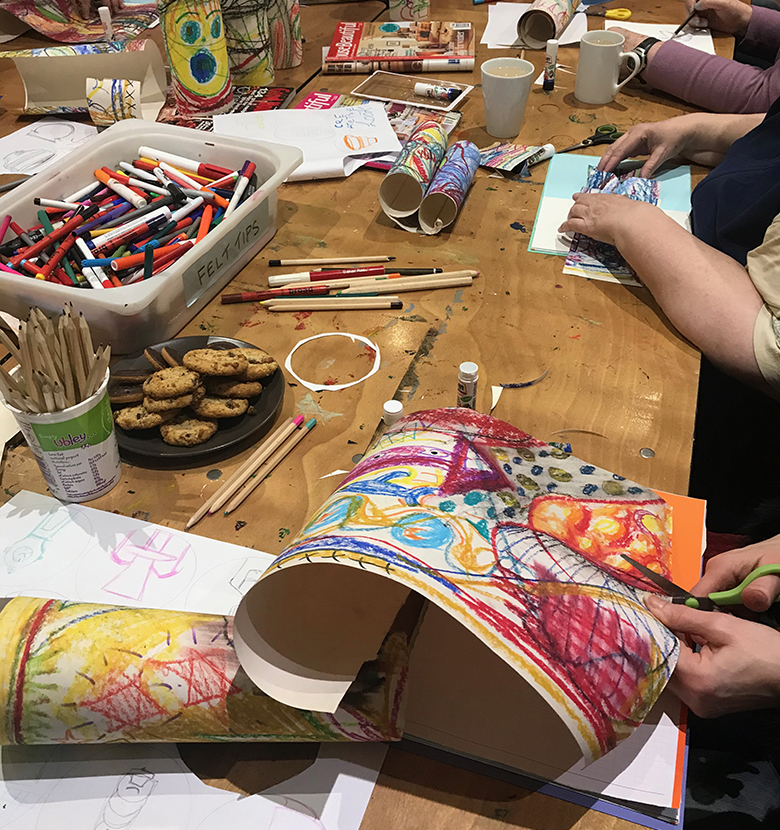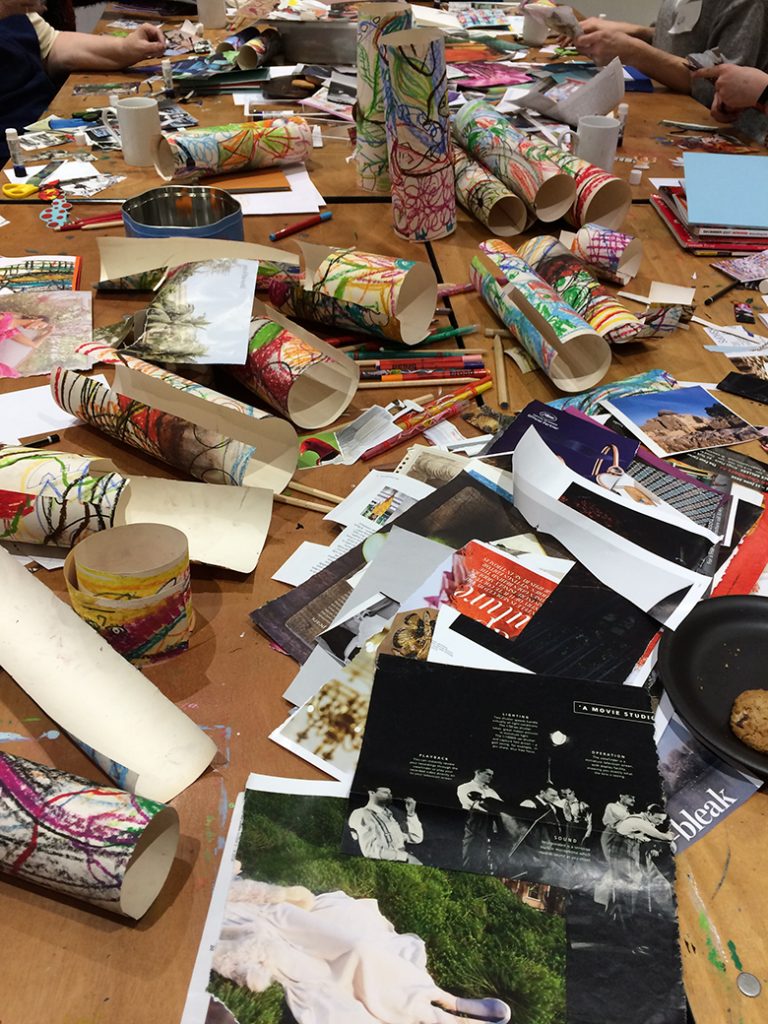We might not have been going anywhere much over the last year or so, but our SEVEN journals have been. First it was New York with The Brooklyn Sketchbook Project then it was much closer to home with Estuary 2021.
Collective Journaling Inspired By The Thames
One of the last things we did in real life, before Lockdown 1.0, was attend an introduction to The Water Replies art journal project, led by Heidi Wigmore at Metal Southend – back where SEVEN all began.
Part of the larger Estuary 2021 festival, The Water Replies, aimed to create “…a collective response to life living and working by the Thames Estuary”. So, in between renovating houses and doing PE With Joe, SEVEN and hundreds of other Estuary dwellers were dabbling in their A5 sketchbooks.
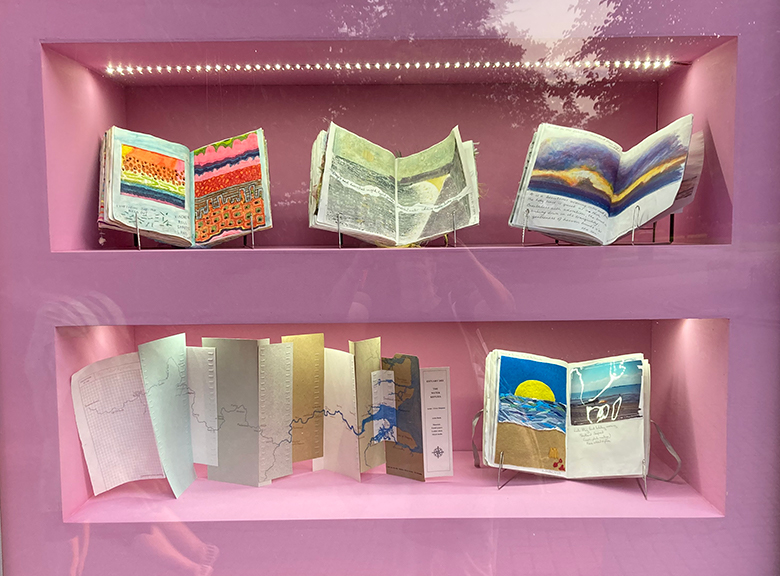
The Journals Go Online
Fortunately much of Estuary 2021 had the potential to be a fresh air festival, featuring a range of art works situated within the very landscape that had inspired them.
But by spring 2021 we were in Lockdown 3.0, or something, and book handling en masse was deemed a no-no. So, The Water Replies journaling project was reimagined as largely an online affair.
- You can peruse the journals here.
While, the real-life journals have been showcased (throughout summer 2021) in the windows of Chalkwell Hall, in a kind of carousel scheme, which sees books moved and pages turned intermittently by invisible hands. Here are some of our pages:
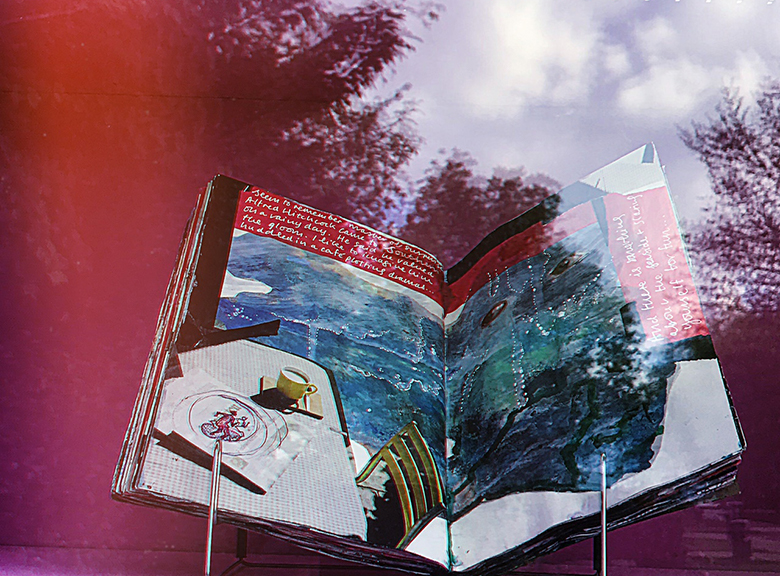
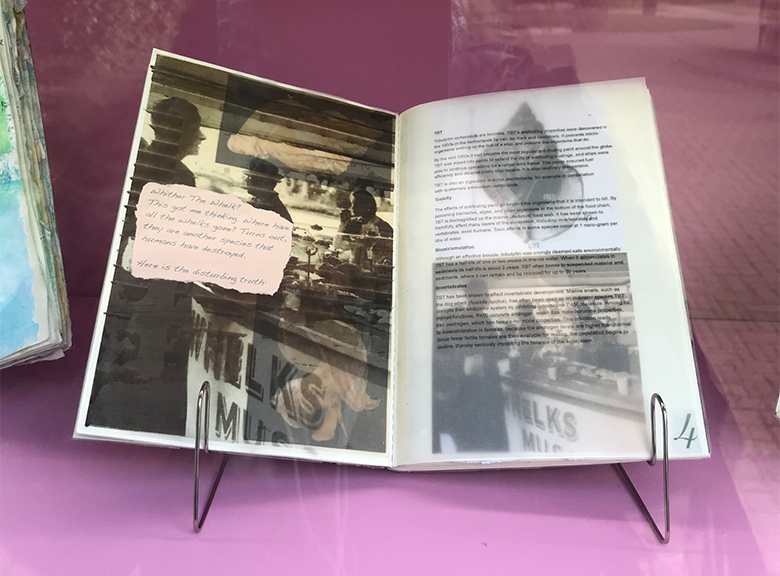
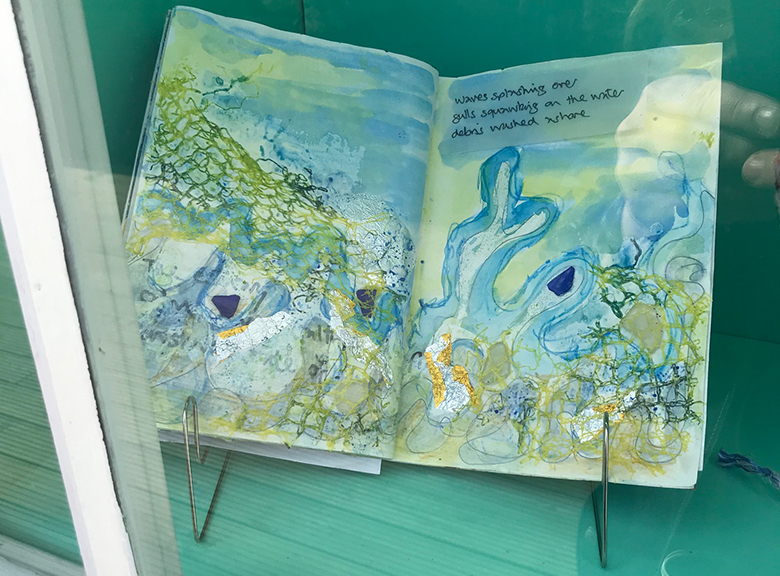
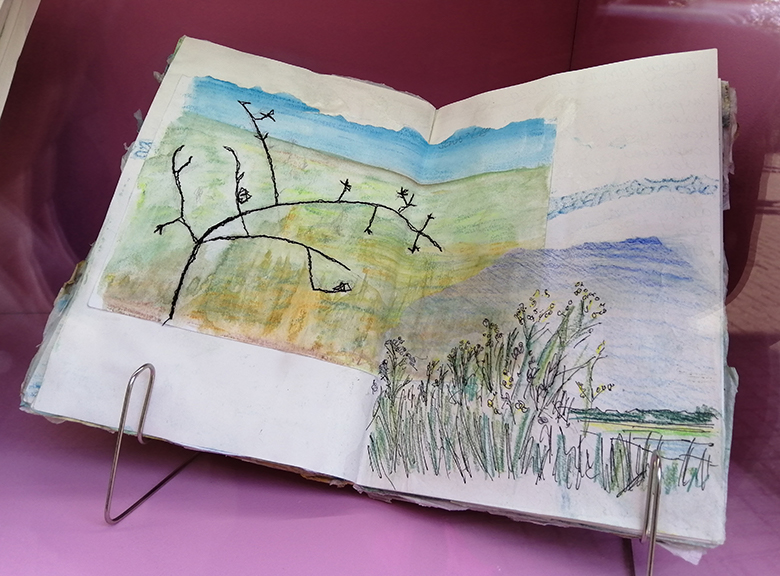
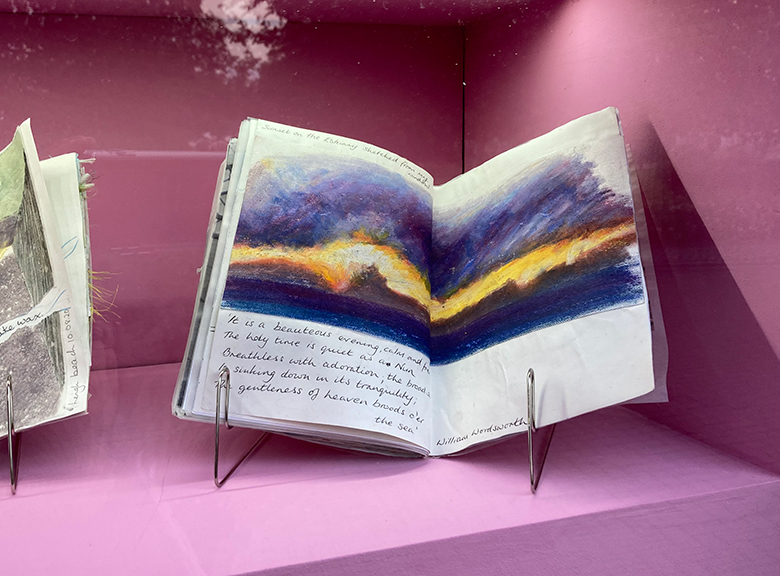
Memory Lanes + Murals
At the start The Water Replies project seemed a little like treading over familiar territory for SEVEN. We’d shown Estuary-themed journals at The Leigh Art Trail and we often look to the local area for inspiration. Yet, 2020 provided this project with an unexpected backdrop and more space for deeper exploration.
So, alongside a kind of visual record of our (then present) Lockdown experiences, more and more memories resurfaced. For me, the stories my mum told me about escaping the grey East London streets for the magic of a seaside town, and the flashes of glamour offered by the yearly carnival and the accompanying torchlight procession seemed particularly poignant.
Curiously, some of my words even managed to break loose the confines of my book, taking on a life of their own. First they became a mural on the wall of Chalkwell Hall, before leaping all the way to London – they were last glimpsed at London Bridge train station (really) making their way to some exotic place – I like to think anyway…
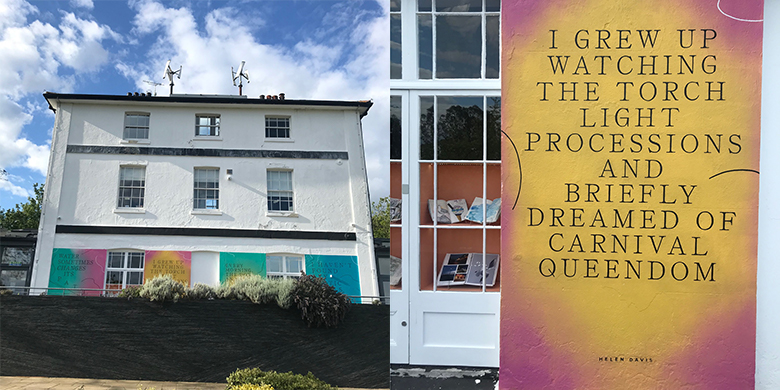
The journals will be on display at Chalkwell Hall until the end of August 2021.
